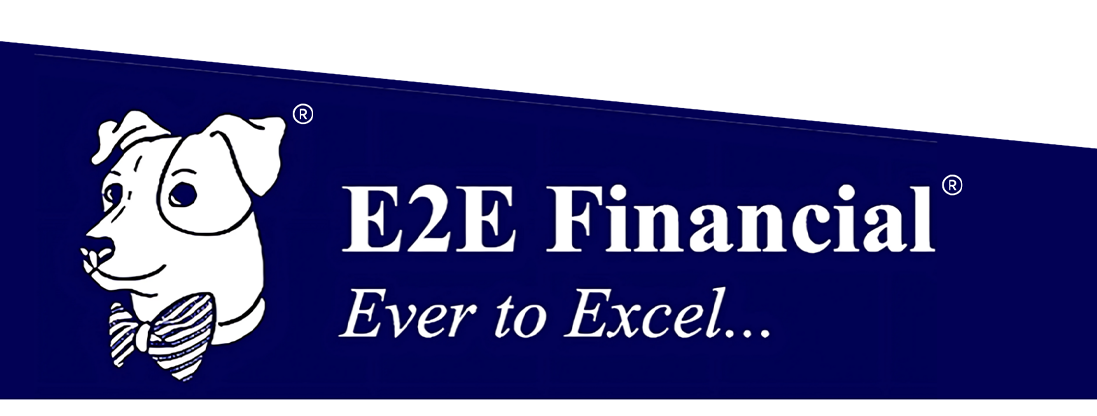After an upside inflation surprise in October, it’s clear that peak inflation may still be ahead, possibly even pushing into 2022. While the Federal Reserve (Fed) maintains its position that elevated inflation will be transitory, we have yet to see progress. Below we look at five signs to watch for over the next several months that may signal that inflation may be near or at its peak.
The October reading for the Consumer Price Index (CPI), the most widely known measure of inflation, came with an upside surprise versus expectations on top of already elevated inflation concerns. The headline number came in at 0.9% for the month and 6.2% for the year, the highest reading since November 1990. The core reading (which excludes food and energy prices) rose 0.6% for the month and 4.6% for the year—the highest since August 1991.
Elevated inflation continues to be largely driven by pandemic-related dynamics—primarily supply chain challenges and tight labor markets combined with high demand as the global economy bounces back. The COVID-19 Delta variant has deepened those problems in unexpected ways, although we cautioned in the early days of the surge that further supply chain disruptions were likely. Calling inflation “transitory” has not really captured these inflation dynamics well. Elevated inflation will last as long as supply chain bottlenecks and hiring challenges remain in place. As those dynamics subside, we expect inflation to return to something close to 2%, but we believe that’s more of a 2023 conversation.
But market participants don’t need to wait until CPI is back under 3% to feel a sense of relief. It would be enough to know that we’re past the peak, something that might not happen until 2022. In fact, since markets are forward looking, it may be enough to have a “peek at the peak.” Here are five signs to watch for that peak inflation, if not immediately at hand, may be in the near future.
Supply Chains
Current inflationary pressure is primarily about supply chain disruptions, the inability to get product to market (whether because of labor and material shortages), the inability to maintain needed inventory, or logistical disruptions. Supply chains will heal over time—businesses have a strong profit incentive to address supply chain challenges. But there are structural constraints on how quickly progress takes place that businesses can’t control.
Housing and Rents
Shelter excluding energy costs, essentially housing costs and rents, makes up about 1/3 of CPI and just over 40% of core CPI (excluding food and energy). Costs for housing have picked up on a year-over-year basis but, unlike some other measures of inflation, it has not yet hit a high dating back to the 1990s [Figure 1]. In fact, current one-year housing inflation, at 3.5%, is lower than its 2019 peak. Nevertheless, housing costs have jumped the last three months and housing inflation is a concern—both because it represents such a high proportion of consumer spending and because it tends to be relatively sticky. Base effects (rolling low numbers off the one-year reading) will likely help push annual shelter inflation higher until April 2022, so looking at monthly numbers will be important. Consecutive monthly readings near 0.3% would be a good sign that housing costs have stabilized but, even at that level, the year-over-year number could continue to climb in the first several months of 2022.
Market Implied Inflation
Breakeven inflation rates, the difference between nominal Treasury yields (the number we usually hear about) and the yield for Treasury Inflation-Protected Securities (TIPS), can provide important information about inflation expectations. The breakeven inflation rate is the forward-looking reading of inflation at which TIPS would outperform similar maturity nominal Treasuries if inflation were to run higher. Because investors are willing to pay extra for a hedge against inflation, the breakeven rate tends to run higher than what true expectations may actually be.
Energy and Commodity Prices
Even though energy prices are volatile compared to overall price levels, for most people prices at the pump shape their perception of inflation more than anything else. Oil prices (West Texas Intermediate) have been climbing since October 2020 and now sit above $80 per barrel compared to a level that generally hovered closer to $60 for much of 2019. Global copper prices started climbing even earlier, beginning their advance in May 2020.
Consumer Sentiment
Influenced by prices at the pump, consumer inflation expectations have skyrocketed. While not the best predictor of inflation, inflation expectations can have an effect on actual inflation and is monitored by the Fed. The Conference Board’s survey of consumer inflation expectations twelve months from now climbed to 7% in October. The New York Federal Reserve Bank’s consumer survey has also seen expectations spike, but to a more moderate (but still very elevated) 5.65% in October. Both of these numbers are well outside of norms.
Conclusion
For market participants, the main inflation takeaway is how it might influence the Fed’s timeline for starting rate hikes. When evaluating that, we believe it’s important to factor in the Fed’s understanding of how a rate hike would impact the kind of inflation we’re dealing with. A rate hike usually helps to control inflation by slowing demand when an economy is overheating. But it can’t help ships unload containers more quickly or help address order backlogs. We still see the first rate hike likely coming in early 2023, especially if there are strong signals inflation has peaked. But if rising housing costs and consumer expectations make higher inflation stickier, we could see the first rate hike pulled into 2022. Whichever way it goes, you’ll know some of the key signals to watch for.
Source: LPL Financial
A Peek at Peak Inflation
The information contained in this e-mail message is being transmitted to and is intended for the use of only the individual(s) to whom it is addressed. If the reader of this message is not the intended recipient, you are hereby advised that any dissemination, distribution or copying of this message is strictly prohibited. If you have received this message in error, please immediately delete.
This information is not intended to be a substitute for specific individualized tax or legal advice. We suggest that you discuss your specific situation with a qualified tax or legal advisor.
This material is for general information only and is not intended to provide specific advice or recommendations for any individual. Investing involves risk including the possible loss of principal.
The S&P 500 is a stock market index tracking the stock performance of 500 of the largest companies listed on stock exchanges in the United States. Indexes are unmanaged and cannot be invested in directly.
The Standard & Poor’s 500 Index (S&P500) is a capitalization-weighted index of 500 stocks designed to measure performance of the broad domestic economy through changes in the aggregate market value of 500 stocks representing all major industries.
The Bloomberg U.S. Aggregate Index represents the U.S. investment-grade fixed-rate bond market. This index is unmanaged, and its results include reinvested dividends and/or distributions but do not reflect the effect of sales charges, commissions, account fees, expenses or U.S. federal income taxes.
Bonds are subject to market and interest rate risk if sold prior to maturity. Bond values will decline as interest rates rise and bonds are subject to availability and change in price.
This material is for general information only and is not intended to provide specific advice or recommendations for any individual. There is no assurance that the views or strategies discussed are suitable for all investors or will yield positive outcomes. Investing involves risks including possible loss of principal. Any economic forecasts set forth may not develop as predicted and are subject to change.
There is no guarantee that a diversified portfolio will enhance overall returns or outperform a non-diversified portfolio. Diversification does not protect against market risk.
Market Index captures broad US equity coverage. The index includes 3,204 constituents across large, mid, small and micro capitalizations, about 99% of the US equity universe. Indexes are unmanaged and cannot be invested in directly.
International investing involves special risks such as currency fluctuation and political instability and may not be suitable for all investors. These risks are often heightened for investments in emerging markets.




